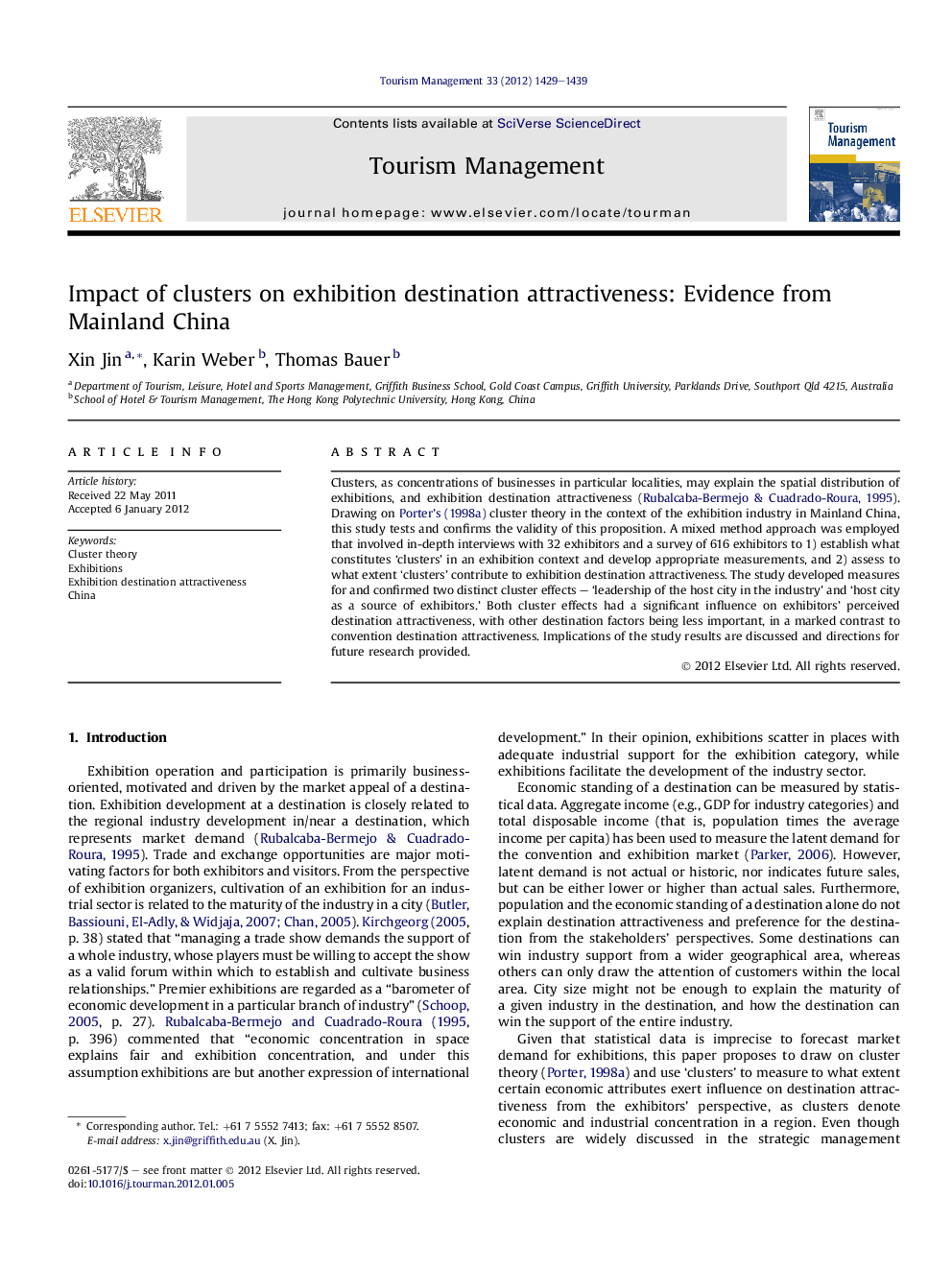| Article ID | Journal | Published Year | Pages | File Type |
|---|---|---|---|---|
| 1012549 | Tourism Management | 2012 | 11 Pages |
Clusters, as concentrations of businesses in particular localities, may explain the spatial distribution of exhibitions, and exhibition destination attractiveness (Rubalcaba-Bermejo & Cuadrado-Roura, 1995). Drawing on Porter’s (1998a) cluster theory in the context of the exhibition industry in Mainland China, this study tests and confirms the validity of this proposition. A mixed method approach was employed that involved in-depth interviews with 32 exhibitors and a survey of 616 exhibitors to 1) establish what constitutes ‘clusters’ in an exhibition context and develop appropriate measurements, and 2) assess to what extent ‘clusters’ contribute to exhibition destination attractiveness. The study developed measures for and confirmed two distinct cluster effects – ‘leadership of the host city in the industry’ and ‘host city as a source of exhibitors.’ Both cluster effects had a significant influence on exhibitors’ perceived destination attractiveness, with other destination factors being less important, in a marked contrast to convention destination attractiveness. Implications of the study results are discussed and directions for future research provided.
